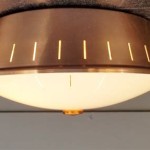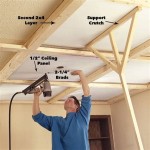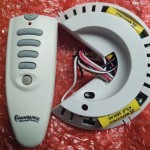How To Put A Heat Vent In Drop Ceiling Revit Family
Adding a heat vent to a drop ceiling Revit family is a straightforward process that can be completed in a few simple steps. By following these steps, you can ensure that your Revit family is accurate and functional.
1. Create a new Revit family
The first step is to create a new Revit family. To do this, click on the "New" button in the Revit ribbon and select "Family Template." In the "New Family Template" dialog box, select the "Metric Generic Model" template and click "OK." This method will create a new Revit family that is based on the Metric Generic Model template.
2. Draw the heat vent
The next step is to draw the heat vent. You can use the "Line" tool to draw the outline of the vent, and then use the "Extrude" tool to create a solid form. Be sure to specify the correct dimensions for the vent, and make sure that the vent is positioned correctly within the family.
3. Add parameters to the heat vent
Once you have drawn the heat vent, you need to add parameters to it. Parameters allow you to control the size, shape, and other properties of the family. To add a parameter, click on the "Parameters" tab in the Revit ribbon and select "New Parameter." In the "New Parameter" dialog box, enter a name for the parameter, select a data type for the parameter, and click "OK." You can add as many parameters as you need to the heat vent family.
4. Create a type catalog for the heat vent
A type catalog allows you to create multiple variations of the heat vent family. To create a type catalog, click on the "Type Catalog" tab in the Revit ribbon and select "New Type Catalog." In the "New Type Catalog" dialog box, enter a name for the type catalog and click "OK." You can then add as many types to the type catalog as you need.
5. Load the heat vent family into a project
Once you have created the heat vent family, you can load it into a project. To do this, click on the "Insert" tab in the Revit ribbon and select "Load Family." In the "Load Family" dialog box, navigate to the location of the heat vent family and click "Open." The heat vent family will then be loaded into the project.
6. Place the heat vent in the drop ceiling
To place the heat vent in the drop ceiling, click on the "Architecture" tab in the Revit ribbon and select "Ceiling." In the "Ceiling" panel, click on the "Drop Ceiling" tool. In the "Drop Ceiling" dialog box, select the type of drop ceiling that you want to use and click "OK." The drop ceiling will then be placed in the project.
7. Add the heat vent to the drop ceiling
To add the heat vent to the drop ceiling, click on the "Insert" tab in the Revit ribbon and select "Load Family." In the "Load Family" dialog box, navigate to the location of the heat vent family and click "Open." The heat vent family will then be loaded into the project. To place the heat vent in the drop ceiling, click on the heat vent family and drag it into the drop ceiling. The heat vent will then be placed in the drop ceiling.

Ducting In Architecture Projects Revit Tutorial

Revit Tutorial Add And Modify Air Terminals

Air Terminals Do Not Cut Ceilings Autodesk Community
Bim Objects Free Revit Hvac Ductwork Bimobject

Ventilation In Revit 2024 Basic Introduction
Bim Objects Free Revit Hvac Ductwork Bimobject

Handling Drainage Vent Piping And View Ranges Autodesk Community

Air Terminals Do Not Cut Ceilings Autodesk Community
Bim Objects Free Revit Hvac Ductwork Bimobject

Exhaust Fan In Revit Free 396 00 Kb Library
Related Posts








